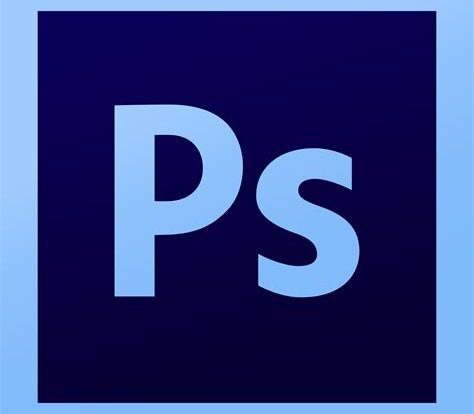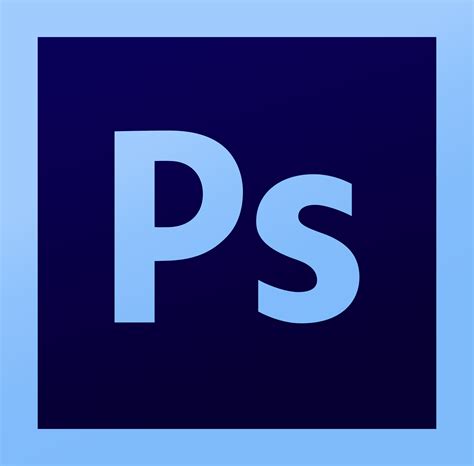

Photoshop is a powerful image editing software used by professionals and amateurs alike. Transform your photos with ease and creativity!
Photoshop is a software that has revolutionized the world of digital art as we know it. With its endless array of tools and features, Photoshop has become a household name for photographers, graphic designers, and artists alike. But what makes Photoshop stand out from other editing software? First and foremost, its versatility. Whether you want to create a stunning piece of artwork or retouch a portrait, Photoshop has got you covered. Moreover, its user-friendly interface lets you navigate through its vast library of tools with ease. From layer masks to blend modes, Photoshop provides endless possibilities for creative expression.
Daftar Isi
The Power of Photoshop:
Introduction
Photoshop is a software application that has revolutionized the world of digital photography and graphic design. Developed by Adobe Systems, it has become an essential tool for professionals in the field of visual arts. With its powerful features and intuitive interface, it allows users to create stunning images that are almost too good to be true.
A Brief History of Photoshop
Photoshop was first developed in 1987 by Thomas and John Knoll. Initially, it was intended to be a simple image editing tool, but as it evolved, it became more sophisticated. In 1990, Adobe Systems acquired the rights to the software, and since then, it has undergone numerous updates and improvements.
The Features of Photoshop
Photoshop has a vast array of features that make it a powerful tool for image manipulation. Some of these features include layers, filters, masks, and adjustments. Layers, for example, allow users to work on different parts of an image separately, making it easier to create complex designs. Filters, on the other hand, can be used to add special effects, such as blurs, glows, and distortions, to an image.
The Benefits of Using Photoshop
One of the benefits of using Photoshop is that it allows users to create images that are of a much higher quality than those created using traditional methods. It also offers a level of precision that is not possible with other software applications. For example, users can crop, resize, and adjust the color of an image with incredible accuracy.
The Challenges of Using Photoshop
Despite its many benefits, there are some challenges associated with using Photoshop. One of the biggest challenges is that it can be difficult to learn, especially for beginners. Another challenge is that it requires a significant amount of processing power, which can make it slow on older computers.
The Ethics of Photoshop
One of the biggest criticisms of Photoshop is that it has the potential to be used to create images that are misleading or deceptive. For example, it can be used to alter the appearance of a model in an advertisement, creating an unrealistic and unattainable standard of beauty. This has led to calls for stricter regulations on the use of Photoshop in advertising.
The Future of Photoshop
As technology continues to evolve, so too does Photoshop. In recent years, Adobe Systems has introduced several new features, such as 3D imaging and video editing capabilities. There is no doubt that Photoshop will continue to be at the forefront of digital imaging for many years to come.
The Role of Photoshop in Society
Photoshop has played a significant role in shaping our visual culture. It has been used to create everything from magazine covers to movie posters, and its influence can be seen in almost every aspect of modern design. As such, it is important that we continue to use it responsibly and ethically.
Conclusion
In conclusion, Photoshop is a powerful tool that has transformed the world of digital imaging. While it has its challenges, its benefits far outweigh its drawbacks. As long as we use it responsibly and ethically, it will continue to be an essential tool for photographers and designers alike.
The Introduction of Photoshop
Photoshop is a digital imaging software that has become a household name. It was first developed by Thomas Knoll in 1987 as a simple two-color image editing program before it was acquired by Adobe Systems in 1988. Today, Photoshop is the most widely used photo editing software, with millions of users worldwide.
The Features Involved in Photoshop
Photoshop is a comprehensive tool for digital imaging. It offers a wide range of features, including basic image editing options such as cropping, resizing, and retouching. Additionally, it offers advanced features such as color correction, layers, masks, adjustment layers, special effects, and plugins. Furthermore, it supports all popular image formats, including PSD, JPEG, PNG, and TIFF.
Photoshop for Beginners
While Photoshop can be intimidating to beginners, it provides an extended learning curve. The software interface is user-friendly, with several tutorials that can help users get started. Moreover, it provides an online community where users can share knowledge and experience, making it easier to learn and master the software.
The Role of Photoshop in Photography
Photoshop plays a vital role in image post-processing in photography. It allows photographers to adjust the exposure, color balance, saturation, and contrast of images, thus enhancing the quality of the photos. Additionally, it offers several tools for retouching and removing unwanted elements from images.
Photoshop in Graphic Design
Graphic designers use Photoshop for designing and editing graphics, logos, banners, and brochures. Photoshop offers designers several tools, like layers, custom brushes, fonts, and shapes, to create aesthetically pleasing designs and layouts. Furthermore, it provides a high degree of flexibility and control over the design process.
Photoshop in Film and Animation
Photoshop is extensively used in the film and animation industry. Animators and filmmakers use it to produce high-quality visual effects, compositing, and color grading. It provides a wide range of tools for creating and manipulating images, making it an essential tool in the filmmaking process.
Photoshop vs. Other Editing Software
While Photoshop is the most widely-used image editing software, other photo editing applications like GIMP, Lightroom, and CorelDRAW provide similar editing options for various user needs. However, Photoshop remains the undisputed choice for professional digital imaging due to its advanced features and flexibility.
Photoshop in Web Design
Photoshop is popular among web designers. It allows designers to create website layouts, custom buttons, and typography, and edit or resize images to fit the website’s design and structure. Furthermore, it provides several tools for optimizing images for web use, making it an essential tool in web design.
Benefits of Photoshop
Photoshop offers users a vast array of benefits, including fast and efficient image editing, limitless options for customizing images, and compatibility with other software like Lightroom and Premiere Pro, making it easy for photographers and editors to edit images and videos. Additionally, it provides a high degree of flexibility and control over the editing process, making it an essential tool for professionals.
Conclusion
In conclusion, Photoshop has revolutionized the digital imaging industry, providing powerful features that have helped photographers, animators, graphic designers, and any other professionals who require editing photos. With its intuitive user interface and advanced features, it continues to set the standard for image editing software. Whether you’re a beginner or a professional, Photoshop offers a wide range of tools and options for creating stunning images and designs.In today’s digital age, Photoshop has become a household name. The photo editing software has revolutionized the way we perceive and manipulate images. However, like any tool, it has its pros and cons.Pros of Photoshop:1. Versatility: Photoshop is an incredibly versatile tool that allows users to edit and enhance photographs in countless ways. From color correction to adding text, there are endless possibilities.2. Professional Quality: With Photoshop, you can produce high-quality images that appear professional and polished. This is particularly useful for photographers, graphic designers, and other professionals who rely on visual media.3. Time-Saving: Photoshop’s automation tools can help users save time by automating repetitive tasks. This means that you can spend more time being creative and less time doing manual labor.Cons of Photoshop:1. Steep Learning Curve: Photoshop is a complex piece of software that can take a while to master. It requires a significant investment of time and effort to become proficient.2. Expensive: Adobe Photoshop is not cheap, and it can be difficult for individuals or small businesses to justify the cost. There are alternative options available, but they may not have the same level of functionality.3. Ethical Concerns: Photoshop’s ability to manipulate images has raised ethical concerns about the authenticity of photos. It’s essential to use the software responsibly and avoid misleading people with doctored images.In summary, Photoshop is a powerful tool that has transformed the way we interact with images. While it has numerous advantages, there are also some potential downsides to consider. Ultimately, it’s up to each individual to decide whether the benefits outweigh the costs.
Photoshop has been a game-changer in the world of photography and graphic design. It has transformed the way we edit images, manipulate colors, and create graphics. However, as much as it is a powerful tool, it can also be a double-edged sword. Photoshop has been known to be misused by some individuals, leading to unrealistic beauty standards and misleading advertisements.
Despite its faults, there are still ways to use Photoshop in ethical and responsible ways. One way is to use it for enhancing natural beauty, rather than completely altering it. Another way is to use it for creative purposes, such as creating art and illustrations. Photoshop should be used as a tool for expression, not deception.
As consumers, we should also be aware of the potential misuse of Photoshop in media and advertising. We should demand transparency and honesty from companies and advertisers, and not fall for unrealistic beauty standards. By being informed and critical of what we see, we can promote a healthier and more inclusive media landscape.
In conclusion, while Photoshop can be a powerful tool, its impact on society can be both positive and negative. As users, we have the responsibility to use it in ethical and creative ways, and as consumers, we have the responsibility to demand transparency and honesty from those who use it in media and advertising. Let us strive for a world where Photoshop is used as a tool for empowerment and expression, rather than deception and manipulation.
Video photoshop
As a journalist, I often receive questions about Photoshop and its uses. Here are some common questions people ask and their corresponding answers:
-
What is Photoshop?
Photoshop is a software developed by Adobe that allows users to edit and manipulate digital images. It offers a wide range of tools and features for image editing, such as adjusting color, cropping, and adding text or filters.
-
Can Photoshop be used for professional purposes?
Absolutely! Many professional photographers, graphic designers, and artists use Photoshop for their work. Its advanced features and capabilities make it a powerful tool for creating high-quality digital content.
-
Is Photoshop easy to learn?
While Photoshop can be a bit overwhelming at first, there are plenty of online tutorials and courses available to help you learn the basics. With practice and patience, anyone can become proficient in using the software.
-
How much does Photoshop cost?
Photoshop is available through a subscription-based model, with plans starting at $20.99 per month. There is also a free trial available for those who want to try it out before committing to a subscription.
-
Can Photoshop be used on mobile devices?
Yes, Adobe has developed a mobile app version of Photoshop that can be used on smartphones and tablets. While it may not have all the features of the desktop version, it still offers a range of editing tools and capabilities.
Overall, Photoshop is a versatile software that can be used for a variety of purposes. Whether you’re an aspiring artist, designer, or just looking to enhance your personal photos, Photoshop has something to offer. With its user-friendly interface and powerful features, it’s no wonder why it’s one of the most popular image editing tools available today.






